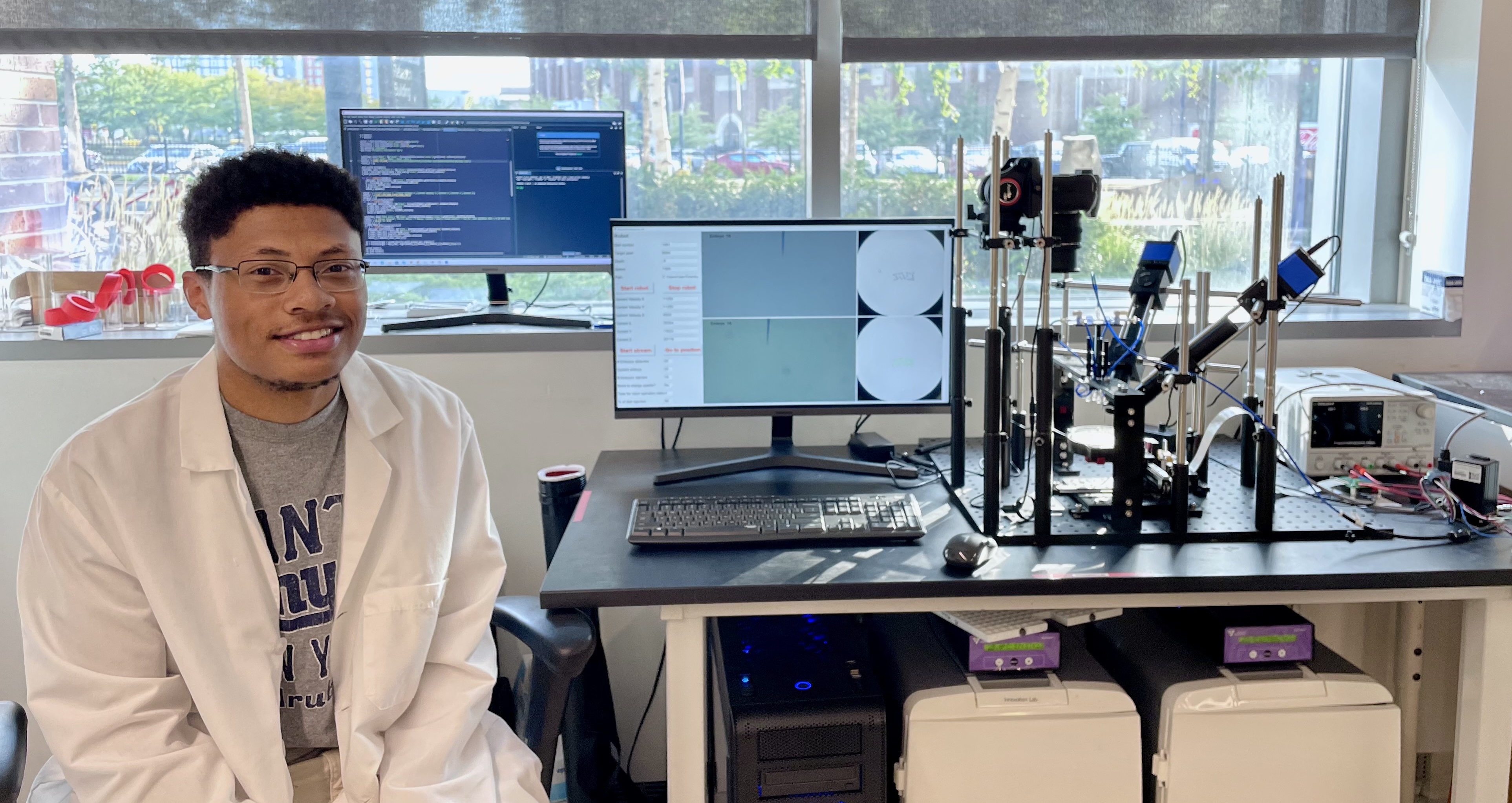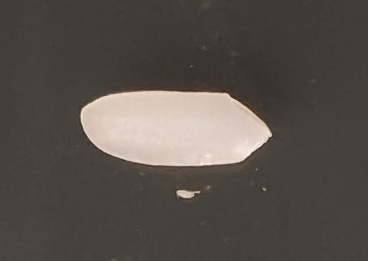Engineering new tools for genomics research
UMGC Innovation Lab Update
September 22, 2022

The cutting-edge next-generation sequencing instruments in the University of Minnesota Genomics Center (UMGC) achieve their massively high output by applying technological advances from different fields, including chemistry, molecular biology, microscopy, and engineering. Tools that enable similarly large-scale experimental manipulations of organisms are needed to take full advantage of these capabilities.
The UMGC Innovation Lab is collaborating with labs across many disciplines, including the Biosensing and Biorobotics Laboratory (BSBRL) in the Department of Mechanical Engineering. Working with UMGC Innovation Lab scientists, Andrew Alegria, a Mechanical Engineering graduate student, has developed an automated microinjection robot for Drosophila embryos that has the potential to dramatically increase the scale at which microinjection can be performed.

The ability to make transgenic animals and targeted mutations via microinjection has been central to the development of sophisticated genetic tools for dissecting development and the nervous system and to the continued prominence of Drosophila as an important model organism.
However, microinjection of fly embryos remains a highly specialized and labor-intensive process that has changed little since it was originally developed four decades ago. The small size of fly embryos and the fact that in order to target the germline, injections must occur at the posterior pole (where the germ cells form) shortly after egg laying, make automating microinjection a significant technical challenge.
These challenges have been solved by reimagining the microinjection process. Initially, embryos are imaged directly on egg collection dishes and a machine learning algorithm is used to identify the embryo locations. Next, multi-perspective microscopes are used to identify and guide the needle to the injection site in three dimensions, as demonstrated in this video. So far, the automated microinjection robot has been used to carry out transposon-mediated and targeted transgenesis, as well as CRISPR-mediated mutagenesis in Drosophila.

Being able to carry out microinjections at an unprecedented scale will eliminate a critical experimental bottleneck and will enable novel types of genome-scale experiments in Drosophila. In addition, the microinjection system uses a highly generalizable approach, and a similar system developed by Amey Joshi, another graduate student in the BSBRL, has been used to successfully inject zebrafish embryos. Thus, this robotic system can likely be applied to carry out microinjection in a wide range of other insect and aquatic species.
"This collaboration is particularly exciting as we get to work at the interface between engineering and genomics. It provides students in my lab with highly interdisciplinary training" says Suhasa Kodandaramaiah, an Assistant Professor in the Department of Mechanical Engineering and leader of the Biosensing and Biorobotics Laboratory. "We're excited to see what happens when we can increase the scale of microinjection technologies by orders of magnitude in parallel to the broader developments in the genomics field."
This work was supported by grants 1R21OD028214 and 1R24OD028444 from the National Institutes of Health (NIH) Office of the Director.
The UMGC Innovation Lab is an externally funded research group that operates within the University of Minnesota Genomics Center and develops novel tools and technologies for genomics research. Current areas of focus are improving microbiome measurements, development of synthetic standards for NGS applications, tool development for functional genomics, and long-read and single-cell sequencing applications. Read more about the Innovation Lab's collaborative research projects.
